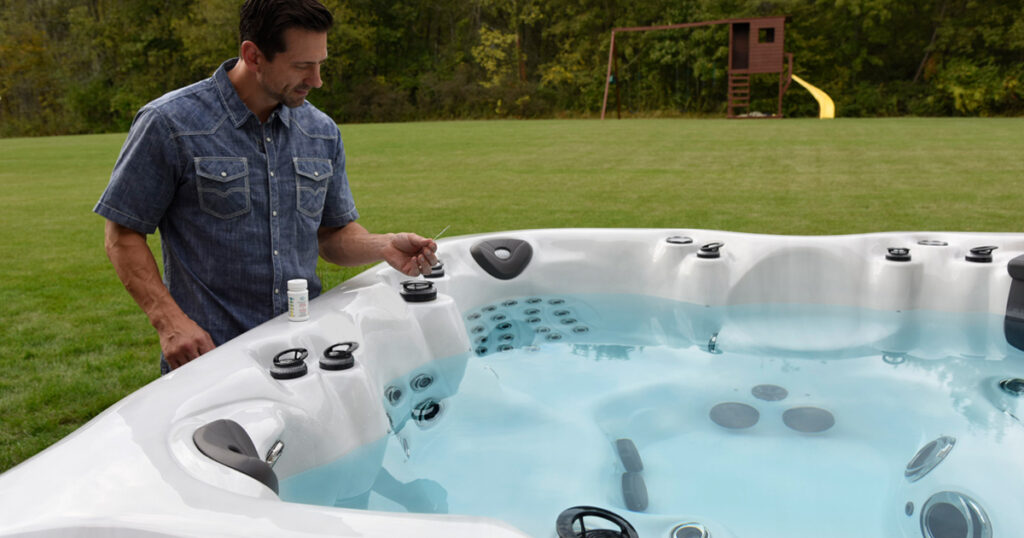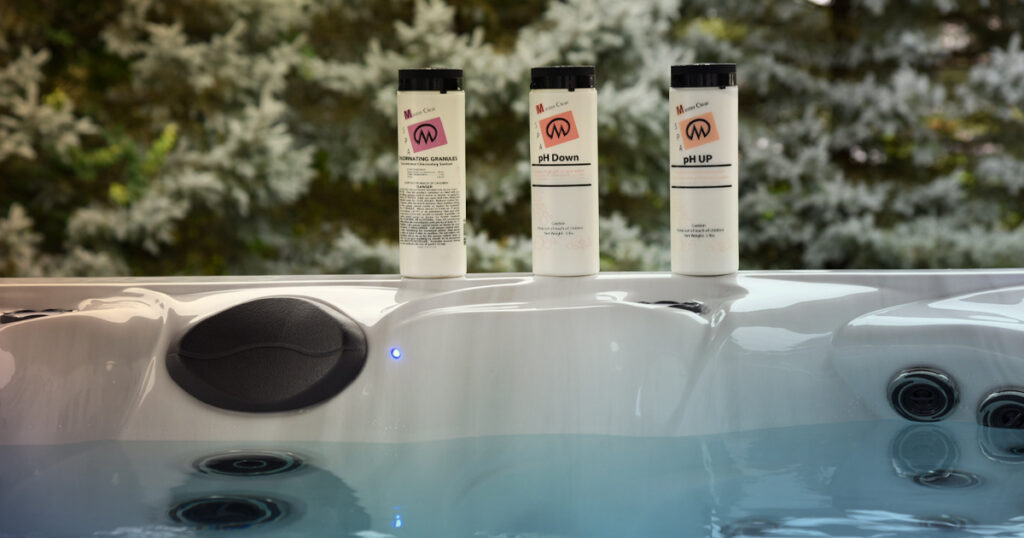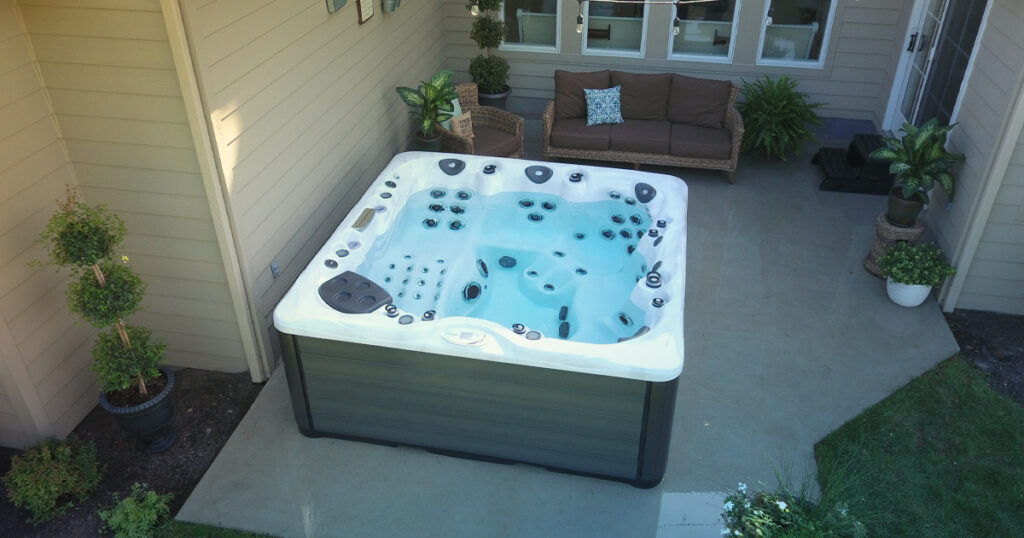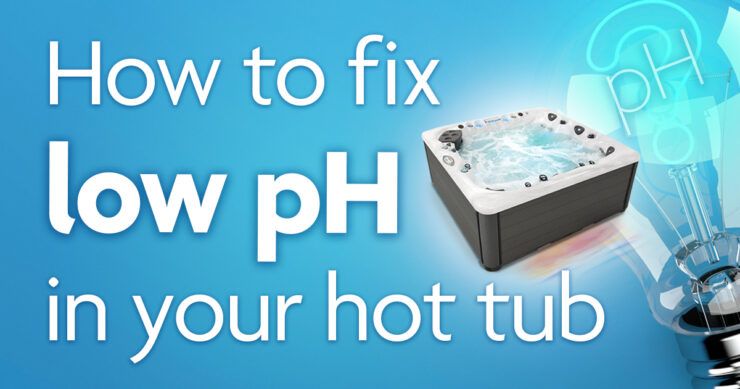You dip the test strip into the water, swish it around, and shake off the excess water. Standing next to your hot tub, you are waiting to see where your chemical levels are at. Testing the water takes less than 30 seconds but it can feel longer — especially if you have been struggling with balancing chemicals.
You look down, look at the bottle, look back down. The hardness and chlorine levels look great but when you look at the pH, frustration sets in. Your hot tub pH is low … again. Instead of enhancing your lifestyle, your hot tub feels like just another thing that needs to be cleaned and maintained
But you don’t need to stress about low pH in your hot tub. It’s important to understand what is causing your pH to drop and how you can keep it in balance.

What is pH?
The pH scale is used to measure how acidic or basic a liquid is, and it goes from 1 to 14. Water, in its purest form, has a pH of 7. Anything above 7 is alkaline. A level below 7 is acidic. For your hot tub, the water should be between 7.2 and 7.8.
When your pH is low, the water is more acidic than it should be. You might notice that the water causes your eyes to sting and skin to itch. When your pH is very low, it is not safe for soaking.
Testing the pH of your hot tub water is more than just a measure of how acidic it is. It’s also indicative of whether there are bacteria or other contaminants in the water.

Testing hot tub pH
One of the most important parts of hot tub maintenance is keeping the chemicals balanced. When your water is balanced, it is clean, clear and safe for soaking.
There are several different ways to test for pH but the most common is to use test strips. Spa chemical test strips will measure your pH, as well as total alkalinity, free chlorine, total chlorine, and hardness.
You should check your pH at least twice a week. However, if you use your hot tub more frequently, you will need to test the levels more often.
Why is it important to check your pH regularly and make sure it’s in range? Low pH in a hot tub could affect your water clarity. More than that, it will make it harder for your sanitizer to do its job.
Keep in mind that when you check your pH, look at the total alkalinity first. If your TA is in range, then you can move onto adjusting your pH.
Why is your pH low?
Water should have a neutral pH but when other things are introduced, the acidity can change. Anything from minerals to grass, dust to body oils will affect the water chemistry of your hot tub.
If the pH in your hot tub is always low, it could be a natural contaminant affecting the levels in your spa. You might be walking through grass or mulch to get into the spa (or those little kiddos are in and out, in and out!). Maybe you are hopping in the spa immediately after a hard workout.
Another common reason your pH is always low might be the water. Yes, it should be neutral. However, local municipalities treat their water so that it is safe for drinking. The EPA recommends that the pH be between 6.5 and 8.5, which is different from the suggested range for spa water. People who do not have city water or use well water might have acidic water as the soil and bedrock affects the pH.
There are other explanations for low pH:
You added too much pH down when trying to balance the water. Hot tub chemicals should be added gradually, and you should check the water after 30 minutes to see whether the levels need further adjusting.
An increased bather load will affect the levels of your water. Natural contaminants on your body will lower the pH and make it harder for the chlorine to work.
Adding too much shock, especially if the pH is already low, will make it harder to get your water in the proper range.

Balancing spa chemicals
A hot tub is an investment in your overall health and wellness. In addition, it’s a way to create a beautiful backyard space that can be enjoyed year-round. You want to protect that investment, and keeping the pH in range is an important part of that. When your pH is too low, it can damage the components of your spa.
How do you raise the pH in your hot tub, especially if it is always low?
The best way to increase the pH in your hot tub is to use a product designed to boost the level. Your Master Spas retailer will have professional chemicals designed specifically for spas.
You will need to know how many gallons of water your spa holds. If you don’t know, you can find this information in your Master Spas owner’s manual. Follow the manufacturer’s directions for adding the product to the water and turn on the jets.
Test the water after 30 minutes or up to an hour later. If the pH is still low, continue to add more product and test periodically until the water is in range.
During this time, do not add any other chemicals to the water or try to adjust other levels.
Patience is always the best course of action when balancing your spa water. The time it takes to get your pH in range will be worth it when you can sit back, relax, and enjoy the benefits of owning a hot tub.
Create a backyard oasis
Hot tub maintenance does not have to be stressful or time consuming. With a Master Spas hot tub, you can enjoy the benefits of hydrotherapy while using fewer hot tub chemicals like pH increaser and decreased. Learn more about the EcoPur filtration system and how the natural minerals help purify the water. Or, contact your local Master Spas retailer to learn more about spa ownership. Wondering how much a hot tub costs? You can request a quote here.


